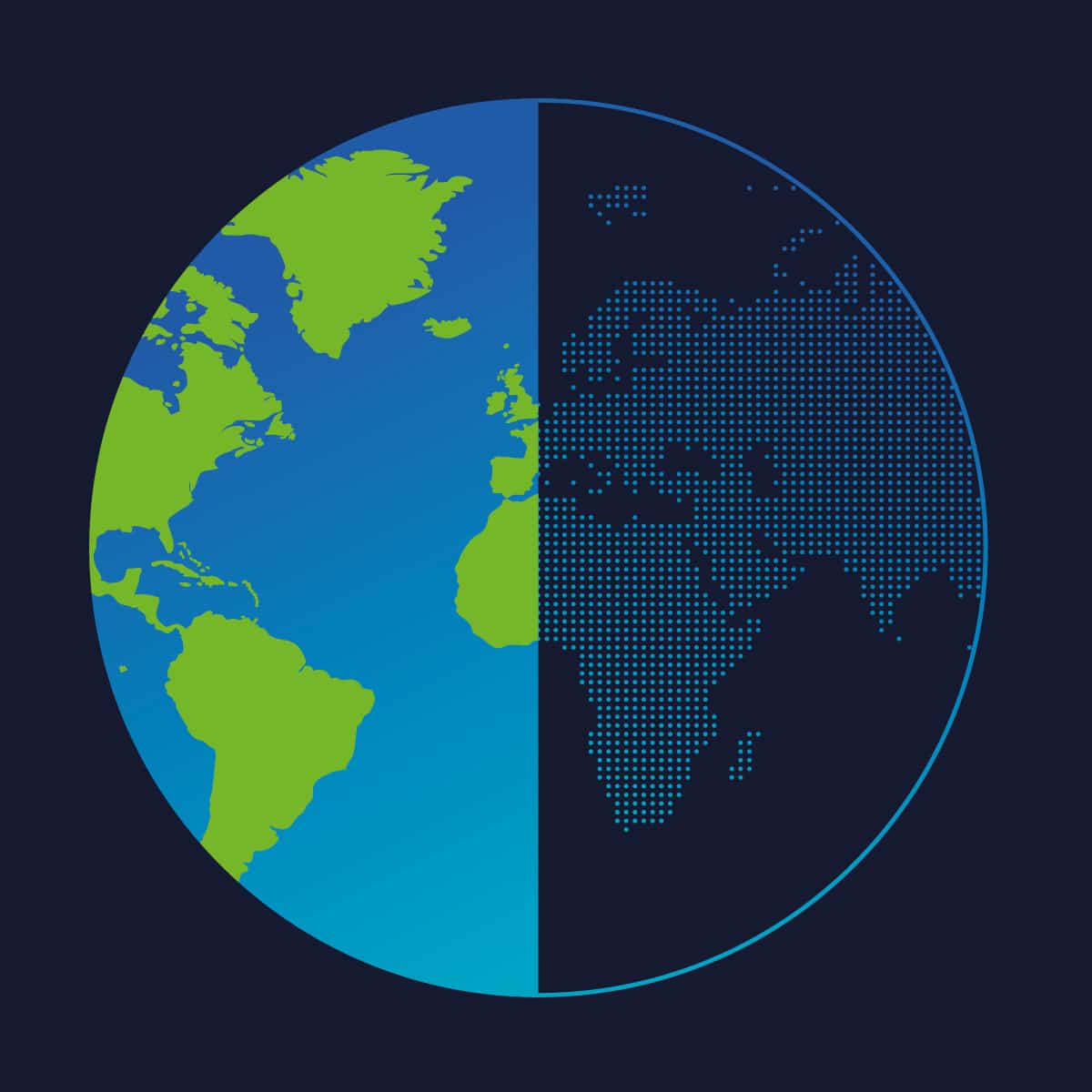
What started as analogue voice services in 1G progressed over the decades to 5G — a cyber-physical world where humans and machines are connected through smartphones, laptops, and other devices. Now, researchers are turning their attention to the next big thing: 6G technology.
This cutting-edge technology has the potential to transform how we interact with physical and digital worlds, aided by advancements in artificial intelligence and machine learning.
6G networks are poised to support full broadband services, becoming a universal technology infrastructure. From promoting the development of digitalization to mobility, networking, and intelligence for all walks of life, 6G may accelerate the inevitable digitization of society.
In this article we’ll examine 4 sectors predicted to heavily impact the development of 6G.
#1: IoT to IoE
5G brought us the Internet of Things (IoT). 6G is expected to usher in a fully integrated, internet-based system providing communication between users, devices, vehicles, and the environment. Essentially, 6G will move the world from the IoT to the IoE.

As illustrated in the chart above, mentions related to the IoT and 6G increased exponentially in 2021. This upward trend is likely to continue as 6G gains momentum. IoT / IoE has immense potential as it benefits a wide range of sectors, including healthcare, smart cities, transportation, and manufacturing. By 2025 it’s estimated there will be over 75 billion IoT devices. What’s more, 6G is expected to make the connectivity between devices seamless and more sustainable.
6G Flagship, a consortium of academic and industry leaders guiding 6G research, published a white paper examining the role that 6G can play in not only increasing productivity and connectivity but in aiding humanity. The combination of IoT and 6G is expected increase sustainability with smart transportation and logistics, including:
- Driverless electric vehicles
- Optimized traffic flow in smart cities
- Smart manufacturing and agriculture
- Smart grids
If launched, these 6G applications will reduce emissions and optimize various energy-heavy processes.
#2: Virtual Reality to Extended Reality
“The physical world and the digital world will grow together.” – Pekka Lundmark
Nokia’s CEO, Pekka Lundmark, believes by 2030 there will be a digital twin of everything. This technological disruption will pave the way toward completely immersive communication, removing distance as a barrier to interaction.
Extended reality technology, with human-like sensory feedback, such as the use of mixed reality in public transport — offering different virtual experiences for passengers — is one likely 6G scenario. Beyond transportation and virtual experiences, communication will approach a fully merged reality where senses and holograms are translated across physical and digital worlds.
6G-powered wearable devices may enable humans to synchronize their physical lives with a digital avatar. This cyberworld would act as an extension of reality, supporting thoughts and actions in real time. Cars, construction machinery, tools, monitoring cameras, and various sensors will also be linked in cyberspace. This will support safety and security, providing a solution to social problems, and a richer human experience.

Forward-thinking companies are eager to be early adopters of 6G technology. As the chart above illustrates, many organizations (including Huawei LG, Intel, and Samsung) have started researching and patenting in the AR/VR 6G space. In the years to come, expect to see more companies jump on the 6G bandwagon.
#3: Brain-Machine Interface Technology
BCI technology allows humans to remove the physical limitations of their bodies without using their traditional neuromuscular pathways.
In an early 6G white paper, published in 2019 by the University of Virginia Tech (VT), researchers flagged the potential to merge 6G technology with BCIs. VT believes wireless BCI technology will allow people to interact with their surroundings through discrete devices, such as wearables, “smart body” implants, as well as devices embedded in the real world allowing for richer connectivity. These connected devices will serve as a form of advanced communication, including haptic messages stimulating touch, and ideas where a device can detect and appropriately respond to the users’ emotions.
This combination and aggregation of devices in a 6G connected world may create an ‘intuitive human-machine interface’ capable of recognizing and making recommendations based on moods, stress levels, heart attacks, and more.
VT researchers predict 6G and BCI technology will replace the need for smartphones. Devices will be worn or implanted, allowing people to interact with, and control, real-world environments. Using haptic feedback sensors, people may even be able to “hug” their loved ones at a distance!
The chart below highlights investments into the BCI industry. As you can see, deals reached an all-time high in 2021, with more than $1.5 billion raised across 56 deals. In conjunction with 6G, investment frequency and size will likely increase in the coming years.

#4: Connected Robotics
6G is poised to give birth to a new industrial revolution, known as “Industry 4.0.” This era marries advanced manufacturing techniques with the IoT/IoE. Robots and fully autonomated vehicles will take part in real time diagnostics, operations, monitoring, and maintenance processes. As a result, high reliability and self-organizing autonomation will penetrate all aspects of daily life. For example, swarms of unmanned ariel vehicles will be used in operations such as fire control, construction, first response, and agriculture.
Looking at some of the fastest growing market sectors in the robotics space, as illustrated below, we see growth for a wide variety of sectors (wearables, rehabilitation, humanoids, logistics, autonomous navigation). As 6G progresses, and there is a greater need for the implementation of robotics in different industries, we can expect these numbers to grow, along with more industries adopting autonomation as the norm.

6G: Ushering in a New Era?
While 6G technology promises to revolutionize various industries, many remain skeptical. Will this cutting-edge technology actually transform the way we interact with the physical and digital worlds, or will predictions fall short?
The verdict is still out. And in all likelihood, we won’t know with certainty until the technology becomes widely available. But the early research does seem promising, and so do the potential applications.
Author Bio

Kate White is the Customer Advocacy Manager at PatSnap. She spends her days learning about and promoting PatSnap customers by highlighting their groundbreaking innovations. Kate holds a Bachelor’s degree in Medical Sciences and Psychology from Western University. In her spare time, she enjoys painting and being outside with her Siberian Husky.
Hot Topics on Discovery
Self driving Machine learning Edge computing Electric vehicle Blockchain Biofuel Image sensor Nanotechnology Robotics Raw material Metal Electrode Voltage Semiconductor Polymer Electricity Coating Fiber Display device Raw material Electric motor Ultimate tensile strength Nozzle Carbon Building construction
Alkyl Service life Electron Oxide Oxygen Solvent Control unit Flange Control system Drug Light source Piston Disease Electric power High pressure
Hot companies on Discovery
Apple Dynamic Network Services Oracle America Sensormatic Electronics Ikeda Bussan Huawei Technologies ZTE Mitsubishi Electric Engineering Samsung Electronics QUALCOMM Freddie Mac Federal National Mtge Siemens UnitedHealth Group General Electric Co AES Marriott International Shell Welltower HCA Healthcare Westconnex Meituan Thermo Fisher Scientific Sea Cruise Air Canada Lineage Logistics Lucid Motors National Treasury Mgmt Universal Music Group Microsoft Disney Baidu Google Oracle IBM BYD Tesla PatSnap Oppo Xiaomi DJI Facebook Spotify Netflix
